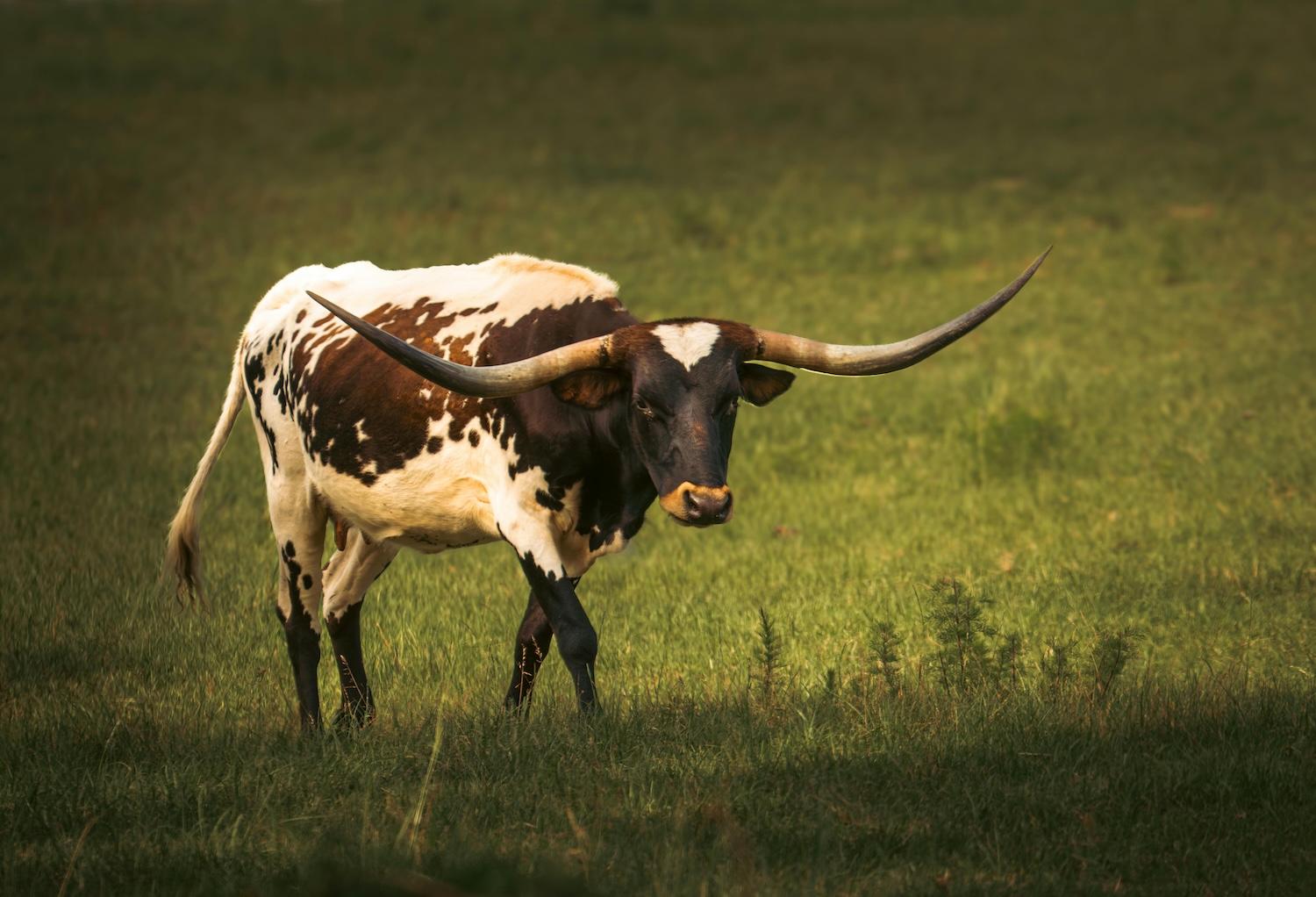Texas Longhorns are famous for their enormous horns, but looks can be deceiving. They may seem impossibly heavy, yet most Longhorns carry them with ease. So just how much do they weigh?
🐂 Quick Answer
On average, Texas Longhorn horns weigh 20–40 pounds in total.
- Cows: 15–25 lbs combined
- Steers: 20–40 lbs (widest spans)
- Bulls: 30–50 lbs (shorter but thicker horns)
Note: A bull is an intact male, while a steer is a castrated male. Steers don’t put energy into reproduction, so more growth goes into horn span — which is why their horns are often the widest.
Exceptional animals may top 100 pounds combined, but that’s rare.
🦴 Why They’re Heavy (But Not Hollow)
- Longhorn horns are not hollow.
- Each horn has a bony core covered by keratin (like fingernails).
- This dense structure gives horns their weight and strength.
- Unlike antlers, which shed each year, horns grow continuously for life.
👉 Wondering what makes them so heavy? Their structure might surprise you—read Are Texas Longhorn Horns Hollow? for the full breakdown.
📈 What Affects Horn Weight
Several factors explain why one Longhorn’s horns weigh more than another’s:
- Sex – bulls = thick, heavy; steers = longest/widest; cows = slender, twisted
- Age – older animals = heavier horns
- Shape – wide flat horns weigh less than tight twists
- Genetics – breeding influences both span and mass
- Nutrition – healthy cattle grow denser horns
🏆 Record Holders
- As reported by multiple news outlets, a Texas Longhorn steer named Bucklehead measured 11 feet, 1.8 inches from tip to tip in 2019, breaking the previous span record (subject to official Guinness confirmation).
- Weight records aren’t tracked officially, but breeders report rare examples of horns exceeding 100 lbs total.
🤔 Do Longhorns Feel the Weight?
Not really. Horns grow slowly over a lifetime, so Longhorns adapt as they go.
- Strong neck and shoulder muscles support the mass.
- They instinctively tilt or turn their heads to navigate fences, gates, and herd life.
👉 Related: How Do Texas Longhorns Live with Those Massive Horns?
🌾 Why Horn Weight Matters
- Ranchers: Horn weight and span are prized in breeding and competitions.
- Historians & collectors: Large, heavy horns are valued as cultural symbols.
- Heritage: Texas preserves Longhorns as a living link to its ranching past.
📚 FAQ
Do female Longhorns have horns?
Yes. Cows, steers, and bulls all grow horns — it’s part of what makes the breed unique.
Are Longhorn horns hollow?
No. They’re solid, with a bony core inside.
Do horns keep getting heavier with age?
Yes. Horns grow for life, though growth slows in later years.
What’s the heaviest Longhorn horn recorded?
Exact weights aren’t formally tracked, but exceptional steers are believed to carry over 100 lbs combined.
👀 See Longhorns for Yourself
Photos don’t do these horns justice — you need to see them in person.
Check out our guide: Where to See Texas Longhorns Up Close (No Bull).
We’re also adding new Texas ranch partners where you can meet Longhorns face to face. Sign up for farm updates to be the first to know.
📚 Sources
- Texas Longhorn Breeders Association of America – Breed Guidelines
- TexasLonghorn.com – Breeder Resources
- CattleToday.com – Forum Discussion: Horn Weights
- GVR Longhorns – Safety Tips





